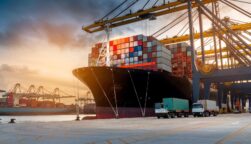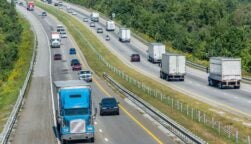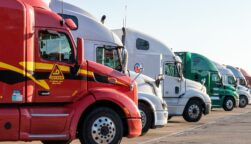Less than a month ago, driverless freight operation Aurora Innovation launched a first-of-its-kind program in Texas that would put commercial self-driving trucks on US public roads. Now, it’s walking back just a little of that innovation.
Aurora’s new change will put a human driver behind the wheel, although they’ll just be there as an “observer” who can jump in if anything goes wrong — the truck will still be driving itself.
Previously, the observer was in the rear of the cabin, and was only riding along on some trips.
Truck Manufacturer Requested the Change
This reversal in policy comes at the request of the heavy-duty truck manufacturer PACCAR Inc. Why? The only brief explanation comes from a statement by Aurora CEO Chris Urmson on the company website: It’s “because of certain prototype parts in their base vehicle platform.”
Presumably, PACCAR isn’t quite comfortable with the possibility of a collision impacting one of their products — as remote as that possibility may or may not be.
 This just in! View
This just in! View
the top business tech deals for 2025 👨💻
“We are confident this is not required to operate the truck safely based on the exhaustive testing (covering nearly 10,000 requirements and 2.7 million tests) and analysis that populates our safety case. PACCAR is a longtime partner and, after much consideration, we respected their request.” – Chris Urmson
According to Urmson, the trucks will remain just as fully autonomous as always, and the company still has full faith in its “near, mid, and long-term development plans.”
Can Aurora Innovation Crack the Self-Driving Problem?
Aurora is moving fast, having just added inclement weather to its autonomous driving framework in March of this year.
Granted, the company is only a few weeks into its most ambitious launch yet, so there’s plenty of time for any of a number of the potential setbacks that seem to have been keeping PACCAR’s executives up at night. It wouldn’t be a shock if the company’s plans are drawn out even further than this latest hitch, too: The illustrious history of self-driving vehicles goes back as far as 1939, with “promising trials” emerging in the 1950s.
Still, it really does seem as though Aurora is on pace to finally overcome the “just five more years” curse that has been keeping self-driving trucks perpetually on the horizon for decades.
The Solution to the Trucking Industry Labor Shortage
Fully autonomous trucks might be a quick fix to one of the biggest challenges facing the US trucking industry in 2025: According to Tech.co’s latest freight research, 25% of US freight firms say a labor shortage is the biggest issue affecting their business.
Plus, with some estimations putting the shortage at 160,000 driver positions by 2030 — and with the US’s freight needs likely increasing by 50% more volume between now and 2050 — things will only get worse for decades.
If self-driving trucks can safely operate across the nation, that concern is mitigated, while shipping companies everywhere can continue growing their profits as usual. In the meantime, however, there’s no harm in companies like PACCAR pushing for as cautious a rollout as possible.




